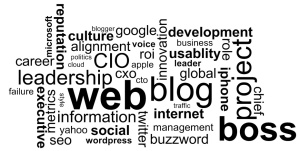 Sitting on the opposite end on the board room table, CIOs need to understand the type of organization they will be joining. Having been on the other end several times, it is important to get a sense that you will be valuable as a CIO and most importantly have job satisfaction. Below are a few questions I think can help.
Sitting on the opposite end on the board room table, CIOs need to understand the type of organization they will be joining. Having been on the other end several times, it is important to get a sense that you will be valuable as a CIO and most importantly have job satisfaction. Below are a few questions I think can help.
- What is your company’s mission and vision? What steps are you taking to accomplish them?
- Can you explain your company’s brand and how it has evolved?
- Can you describe your company’s growth (or lack there of) in terms of revenue and hiring over the last 5-10 years?
- What do you think distinguishes this company from its competitors, both from a public and employee perspective? How is technology used by your competitors? How is a CIO role used by your competitors?
- Can you explain your company’s structure and how a CIO role will fit in?
- How do you see the CIO role contributing to the success of the organization?
- Is this a new CIO position, or did someone leave? If someone left, why did they leave? If this is a new position why are you looking for a CIO now?
- How would you describe the company’s culture and leadership philosophy and style? Could you describe the type of employee who fits well with it?
- What are some of the technical problems facing your staff, and how to do you see the CIO role solving it?
- How is the technology department perceived today? What past steps have been taken to correct this perception? What steps were successful or not?
- What steps have the company done recently to show how it values its technology?
- How does management view the CIO role and the importance of the IT department?
- What is the company’s plan for the next five plus years, and how does the IT department fit into these plans?
- How do other executives view IT? As a Business Peer/Game changer or Service Provider/Cost Center?
- How have various types of decisions been made (i.e. M&A, process changes, layoffs, loss of business, risks, new business)?
- How will my leadership responsibilities and performance be measured? By whom? How often?
- What would you say are the five most important skills/traits needed to excel in this position?
- What particular achievements would equate to success in this role? What would success look like?
- What challenges will this role face? What advice will you give to succeed?
- Are you most interested in a candidate who works independently, on a team, cross-functionally, or through a combination of them all?
- What is your ideal communication style? Do you meet regularly with your team, rely heavily on e-mail, use status reports or work primarily through other means?
- How much guidance or assistance is made available to employees in developing career goals?
- What resources will be available to the CIO to ensure success?
- How do you see me as a candidate for the job in comparison with an ideal candidate?
- Do you have any concerns about me or about my qualifications that may prevent you from selecting me for the role?



